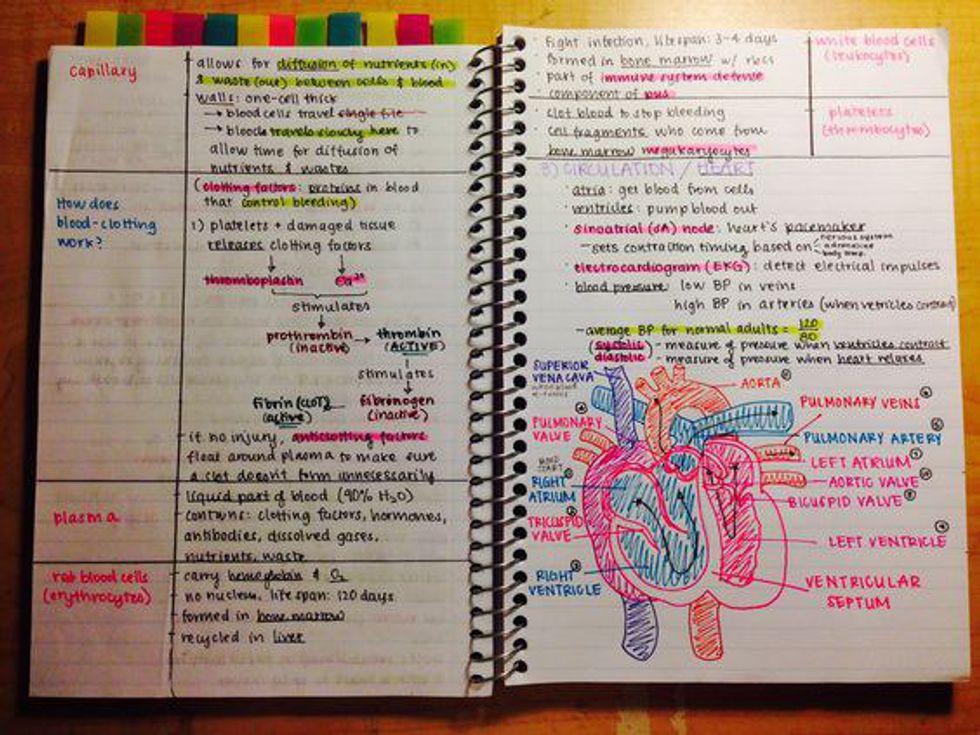In the American education system, what children now do in kindergarten is now equivalent to what we once did in first grade. The difference between kindergarten and first grade may seem negligible, but think back: in kindergarten, I remember having at least an hour of recess, naptime, snacktime, and doing most of my "academic" activities with the help of crayons and glitter. Now, the days of kindergartners are packed to the rim with three hours of reading and writing, an hour and a half of math, and a meagre twenty minutes of recess. The most obvious difference is the mandating of two fifty-six question standardized tests, taken by kindergartners on only the fourth week of school.
What's missing from this curriculum? A lot- creativity, rest time, and time to socialize. Within only a few years, the kindergarten experience has been completely overhauled. A study by the University of Virginia revealed that the percentage of kindergarten teachers who believe that children should learn to read in kindergarten has gone up from 30 percent in 1998 to a whopping 80 percent in 2010. The study found that the more time American kindergarten classrooms spent on literacy, the less time they spent on arts, music, and other creative activities.
This replacing of creativity and free time to explore the world of learning with rote lessons and rigorous schedules stands in heavy contrast with Finland. We constantly look to Scandinavia for examples of prisons that rehabilitate (Norway), an effective healthcare system (Sweden), and other hallmarks of a successful society concerned with the welfare of its citizens. Finnish education is referenced worldwide as a successful system. Finland is frequently praised for the achievements of its teenagers on the PISA test, an international aptitude test. Many progressive educators have been calling for US high schools to more closely reflect the practices of Finnish huh schools. However, not much is heard about the lower grades in the Finnish education system. American kindergarten can learn from the way Finnish kindergarten is run. Most Finnish children start "preschool" at age six. "Preschool" is the beginning of compulsory, government paid education; in Finland, private schools do not exist. So not only do children in Finland start school later- they also spend most of their "preschool" days not doing worksheets and reading textbooks, but playing and creating.
Finnish kindergarten is just four hours long. Finnish kindergarten teachers guide classroom direction around the idea that children work well through play- they become so invested and interested in what they're doing that they don't realize they're learning. Play contributes to language, math, and social interaction skills. Contrasted to worksheets and lessons, play is much more child-directed than classroom style learning, which is wholly teacher directed.
Finnish kindergartners only engage in desk work- as in sitting at a desk with a pencil and doing a worksheet- one day a week. Timothy D. Walker, a journalist, visited Finnish kindergarten for a day. The Friday he visited began with Morning Circle- a communal time of songs. Once Morning Circle ended, the children separated and went off to the station of their choice- one involved fort making with bed sheets, one was for arts and crafts, and one allowed students to run a pretend ice cream shop.
The issues with American education run deep and temporally long: issues persist far past kindergarten and grade school. One of the most pervasive problems with American education is its stubborn and unrelenting emphasis on testing. Almost all American high school students would unanimously agree that much of their junior to senior year lives are spent preparing for and stressing over standardized tests such as the SAT and ACT. Even before this, students develop familiarity with standardized tests in elementary school, and move on to take regents exams, benchmarks, etc. In stark contrast to this, Finnish students only take one standardized test during their entire primary and secondary schooling.
Constant testing does not make students any smarter, but instead creates an uncomfortable, counterproductive "teach for the test" environment in schools. Most tests in American schools involve teaching students to regurgitate information, not to think critically and smartly about relevant issues. For example, on the one standardized test that Finnish students take, they are asked to show their ability to cope with issues related to evolution, losing a job, political issues, violence, war, or ethics. American education is quite compartmentalized in programs such as AP and Common Core.
Education is not something that can be tapered into a one-size-fits-all curriculum; yet, this is exactly what organizations like College Board and Common Core are trying to do. They encourage "teaching for the test" pedagogical style; they also make teachers less inclined to be enthusiastic about the subject matter, which leads to less enlightening classroom experiences for students.
Finland's pre-primary core curriculum emphasizes play far more than any type of traditional pedagogical style. Perhaps this stems from an old Finnish saying: "Those things you learn without joy, you will forget easily."









































